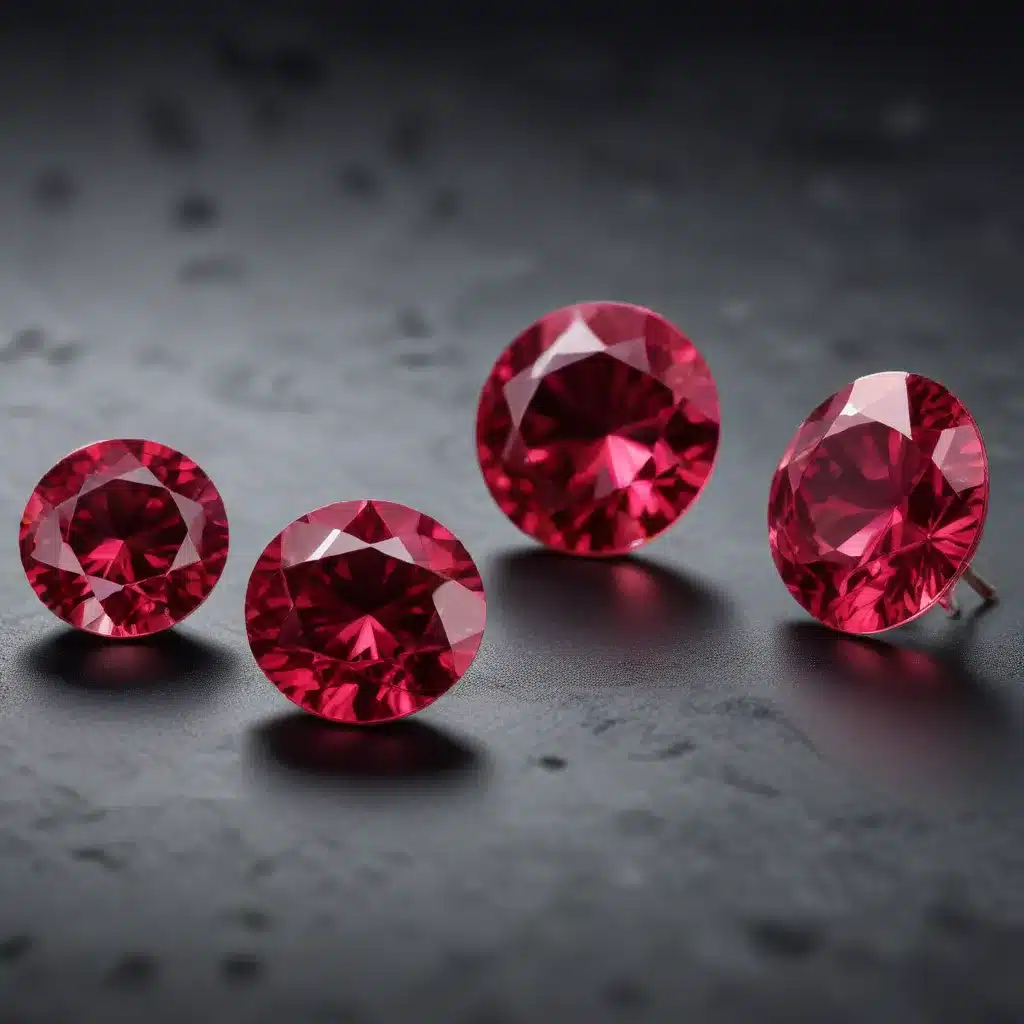
Whether adorning exquisite jewelry or serving as a symbol of love and passion, rubies have captivated the hearts and minds of people for centuries. These remarkable gemstones, with their rich, saturated red hues, have long been prized for their rarity and beauty. However, the journey from the Earth’s depths to the finished gem is anything but simple.
Gemstone Formation and Characteristics
Rubies are a variety of the mineral corundum, which is composed of aluminum oxide (Al2O3). The unique crystalline structure of rubies is what gives them their distinctive appearance. As the corundum crystals form, trace amounts of chromium become incorporated, replacing some of the aluminum atoms. This chromium is what imparts the red coloration that we associate with rubies.
The clarity and color saturation of natural rubies can vary greatly, depending on the presence and distribution of impurities within the crystal structure. While some rubies may boast a deep, blood-red hue, others may appear more pinkish or even contain visible inclusions that affect their brilliance. These natural variations are part of what makes each ruby a unique work of nature.
The Challenges of Natural Ruby Mining
Finding and extracting natural rubies is a significant challenge. The primary ruby deposits are located in a handful of regions around the world, such as Myanmar, Vietnam, and Madagascar, where the gemstones are found deep within the Earth’s crust. Mining these deposits is an arduous and environmentally taxing process, often involving the displacement of entire communities and the destruction of fragile ecosystems.
Furthermore, the scarcity of high-quality natural rubies has driven prices to astronomical levels, putting them out of reach for many consumers. This has created a demand for more affordable and accessible alternatives, paving the way for the rise of lab-grown rubies.
The Emergence of Lab-Grown Rubies
The concept of synthesizing rubies in a laboratory setting is not a new one. In fact, the first successful attempts to create artificial rubies date back to the late 19th century, when French chemist Auguste Verneuil developed a process known as flame fusion, or the Verneuil process. This technique involved melting aluminum oxide and chromium oxide together in a high-temperature flame, allowing the molten materials to crystallize and form ruby-like structures.
Over the decades, advancements in technology and materials science have led to the refinement of lab-growing techniques, resulting in the production of lab-grown rubies that are virtually indistinguishable from their natural counterparts. Today, these synthetic rubies are not only more affordable but also more accessible, opening up the world of fine jewelry to a broader audience.
The Science Behind Lab-Grown Rubies
The key to producing high-quality lab-grown rubies lies in the precise control of the crystal growth process. Modern techniques, such as the Czochralski process and chemical vapor deposition (CVD), allow scientists to carefully regulate the temperature, pressure, and chemical composition of the growth environment, ensuring the formation of flawless, uniform ruby crystals.
In the Czochralski process, a seed crystal is slowly pulled from a molten bath of aluminum oxide and chromium oxide, allowing the crystal to grow in a controlled, methodical manner. The CVD method, on the other hand, involves the deposition of vaporized compounds onto a substrate, resulting in the growth of a thin, crystalline ruby layer.
By manipulating the growth conditions, lab-grown rubies can be tailored to match the optical properties and color characteristics of their natural counterparts. This includes the ability to precisely control the distribution and concentration of chromium within the crystal structure, ensuring a consistent, vibrant red hue.
Optical Properties and Brilliance
The allure of rubies, both natural and lab-grown, lies in their exceptional optical properties. These gemstones possess a high refractive index, which is a measure of how much light bends as it passes through the material. This, combined with their ability to disperse light into a spectrum of colors, gives rubies their characteristic “fire” and sparkle.
In the case of lab-grown rubies, the cutting and polishing processes are critical in enhancing these optical qualities. By carefully shaping the gemstones and ensuring precise facet angles, jewelers can maximize the reflectivity and light dispersion, resulting in a truly mesmerizing display of brilliance and color.
Applications and Uses of Lab-Grown Rubies
The versatility of lab-grown rubies extends far beyond the realm of jewelry. These synthetic gemstones have found applications in various industries, from electronics and optics to medical implants and aerospace components. Their ability to be produced in larger sizes and with greater consistency makes them an attractive option for industrial and technological uses.
In the jewelry industry, lab-grown rubies are increasingly being recognized for their affordability, ethical sourcing, and environmental sustainability. By eliminating the need for resource-intensive mining operations, lab-grown rubies offer a more sustainable alternative that appeals to conscious consumers.
Ethical and Sustainability Considerations
The environmental impact of natural ruby mining has long been a concern, with the extraction process often leading to the destruction of fragile ecosystems and the displacement of local communities. Lab-grown rubies, on the other hand, offer a more environmentally-friendly solution, as they can be produced in controlled, low-impact facilities with minimal waste and resource consumption.
Moreover, the transparency and traceability of lab-grown ruby production address the ethical concerns that have plagued the gemstone industry. Consumers can now make informed choices, knowing the origin and production methods of the rubies they purchase.
As the demand for sustainable and ethical gemstones continues to grow, the scientific advancements in lab-grown ruby production are poised to shape the future of the jewelry industry, providing a brilliant and responsible alternative to natural rubies.

